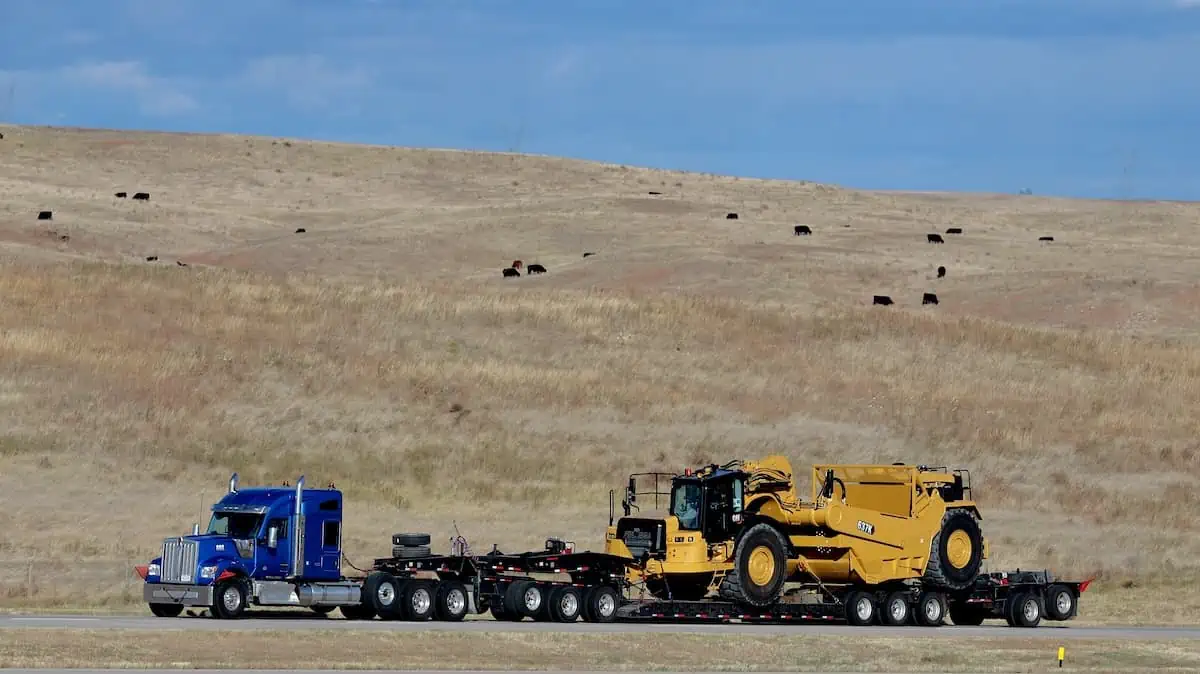Transporting heavy machinery is a challenge. Performing a successful transport requires expert planning, preventative measures and strategic execution. Many times, heavy equipment hauling involves moving long distances and oversized loads.
Here, we’ll uncover the challenges of transporting heavy equipment and the strategies you can use to ensure a successful move.
The Challenges of Shipping Machinery
At first, the challenges of hauling heavy equipment may be overwhelming. Understanding the potential hiccups and difficulties can give you the knowledge to overcome them.
Some of the most common challenges when shipping machinery include:
- Route planning
- Safety standard compliance
- Weight and size limitations
- Loading and unloading
- Requirements for transporting specialized equipment
- Liability and insurance
- Timing the transport correctly
Strategies for Successful Transport
Here, we’ll dive deeper into the challenges of hauling heavy equipment and how you can overcome them through expert planning and careful, strategic execution.
Create an Efficient Route
The route can be one of the most significant challenges when transporting large machinery. The route may include narrow roads, low bridges, tunnels or other obstacles that make passing impossible.
Knowing traffic restrictions, possible weather issues, detours and weight limits before the journey will save your company from serious setbacks.
Prepare With Preventative Measures
Roughly half of the injuries that occur while transporting heavy machinery take place during the loading and unloading processes. Proper preparation can prevent injury and ensure the processes run smoothly.
When loading, drivers need to face the heavier side of the load forward. It should be as close as possible to the trailer’s header board or bulkhead.
Heavy equipment needs to be secured with the right restraints, bracing and bolting. Proper weight distribution is also essential. Once the load is in the desired location, you’ll load the machine’s appendages (such as bulldozer buckets or excavator arms), toward the floor of the trailer.
Secure the load using the securement points established by the manufacturer. They’re generally near the rear and front of the machine. Never use securement points that appear weak or damaged; this can result in serious damage down the road.
The following are several tips to keep in mind when securing heavy machinery, such as bulldozers, excavators and loaders:
- Always review the size of the chain and hook to ensure it’s ideal for the load you’re securing.
- Use at least four chains to secure the load.
- Secure the chains linearly with no twists or bends.
- Secure the chains without any slack.
- Keep plenty of distance between the spotter and equipment in case of emergency.
Always perform a final check by walking around the load and assessing the condition of the chains, securement points, hitches and tires. Honest communication and safety checks are essential to ensure the driver has a flawless journey.
Understand the Laws and Regulations
The requirements for transporting heavy equipment change from time to time and can significantly impact the success of your journey. Remember that there’s an 80,000-pound gross vehicle weight limit on interstate roads. Truckers may also limit their driving to 11 hours a day to accommodate a safe sleep schedule.
It is essential that all drivers understand state and federal laws they will encounter throughout the delivery. Drivers carrying heavy loads must check in at inspection points along the road, especially when the route is long distance. Drivers should stop regularly to check the chains, tie-down points and cargo.
Overweight and oversized freight must also adhere to speed limits that are generally lower than traditional vehicles. Drivers who understand the speed limits, laws and regulations regarding their specific load will have a more successful and hassle-free journey. Laziness or disregard for regulations will only result in costly and time-consuming problems.
Unfortunately, accidents can occur when transporting heavy equipment. Transport companies must have comprehensive insurance to protect the people and machinery involved. The right insurance can accommodate any mishaps or damage that take place during transport.
Execute the Move Safely and On Time
Moving heavy equipment safely is no easy task. Once you’ve planned the safest and most efficient route, it’s time to execute the move. Timely delivery is an essential factor for your clients, and a late arrival can affect their project and profits.
Always be transparent about any delivery hiccups and aim to be as timely as possible. Fully understanding the route and regulations before your journey will assist with coordination and timeliness.
There’s no denying that transporting heavy equipment has its challenges. However, these challenges are relatively easy to combat with the right preparation, understanding and attention to detail.
Transportation companies must familiarize themselves with the laws and regulations in the states their drivers will pass. They must also understand the importance of carefully loading and unloading heavy equipment because any hiccups can be incredibly dangerous and expensive. With the right preparations and care, heavy equipment transport can go off without a hitch.
SOURCES
https://titanww.com/how-to-transport-construction-equipment-safely/
https://ops.fhwa.dot.gov/freight/policy/rpt_congress/truck_sw_laws/
Article and permission to publish here provided by Lucas Jackson. Originally written for Supply Chain Game Changer and published on December 26, 2023.
Cover photo by Preston A Larimer on Unsplash.

